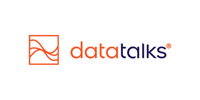Analytics in the CDP
How Data Talks CDP empowers organizations with actionable insights through out-of-the-box and customizable analytics dashboards
The Data Talks Sports CDP offers powerful analytics capabilities tailored specifically for sports organizations. Whether you're tracking campaign performance, ticketing or merchandise revenue, fan behavior, or database growth, the CDP ensures you have access to the metrics that matter — in real time, with minimal setup, and directly within the platform.
Analytics in the CDP is designed to be both ready-to-use and customizable, making it easy for non-technical users to start tracking KPIs and for more advanced users to configure their own dashboards and reports.
📊 Purpose of CDP Analytics
Analytics in the CDP serves three primary purposes:
-
Monitor and optimize marketing campaigns to ensure ROI
-
Track revenue and fan engagement across digital and offline channels
-
Maintain and grow a healthy, active supporter database
These insights help marketing, commercial, ticketing, and digital teams make data-informed decisions — faster.
🧭 Where Analytics Appears in the CDP
Analytics is available in three key areas of the platform:
1. Scorecard (Dashboard Homepage)
The Scorecard is the first screen users see when logging into the CDP. It provides a curated, high-level overview of business-critical KPIs. This includes:
-
Database size & growth over time
-
Marketing campaign activity
-
Campaign revenue
-
Ticketing and merchandise sales
📌 The Scorecard is configured during onboarding by Customer Success Managers, based on available data sources. While it is customizable later, most users rely on the setup provided during onboarding.
Example Scorecard

2. Analytics Framework (Dashboards Menu)
Located in the left-hand menu under Analytics Framework, this section houses all dashboards available to the user:
-
Custom dashboards, created by users or Customer Success
-
"All Dashboards" button to browse, search, or create new dashboards
This is the go-to area for both standardized and flexible reporting. Examples include campaign analytics and campaign monetary performance, ticketing, web behavior trends, and more.
🛠️ Self-service capabilities for creating and editing dashboards are covered in a dedicated article.

3. Supporter Profile Analytics (Per-Profile Insights)
Within each supporter profile, users can define and view custom metrics based on all available data points, including:
-
Total purchases and revenue per supporter
- Events attended
-
Number of email opens or clicks
-
Engagement across touchpoints
These metrics are typically set up during onboarding, but users can edit or create new ones as needed. This enables 1:1 understanding of each fan’s behavior and value.
NOTE: changing Profile KPIs on a single profile will impact all other profiles' KPIs in the CDP.

💡 Best Practices & Tips
| Tip | Why It Matters |
|---|---|
| Use Scorecard daily | Quickly monitor high-level trends across marketing, ticketing, and engagement |
| Rely on out-of-the-box dashboards | Saves time and ensures reporting consistency across teams |
| Track database hygiene | Regularly monitor unsubscribes, bounces, and invalid emails |
| Link campaign analytics to revenue | Validate campaign ROI through linked ticketing or ecommerce data |
| Update custom profile metrics periodically | Keep supporter scoring and personalization logic aligned with business goals |
🚀 Summary
The CDP's analytics capabilities are embedded into every layer of the platform, allowing you to:
-
Get instant insights at login via the Scorecard
-
Drill into pre-built out-of-the-box or custom dashboards for in-depth analysis
-
View fan-specific metrics directly on supporter profiles
Whether you're measuring ticketing revenue, campaign success, web engagement, or supporter value, the CDP provides you with a complete analytics toolkit — built for sports, ready out-of-the-box, and flexible enough for your evolving needs.
